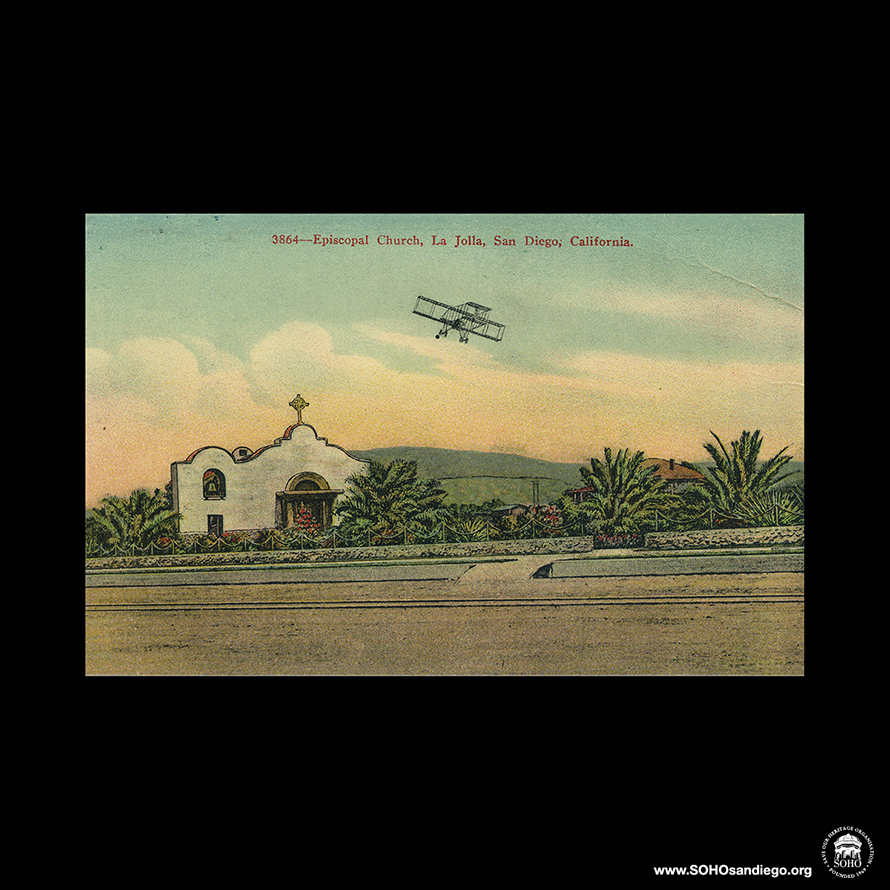|
Postcards of Gill Buildings, 1900-1930s
LONG-TIME SAN DIEGO RESIDENT and expert on Irving Gill, Erik Hanson, has amassed the largest known collection of historic postcards focused on Gill's architecture. Of 80 postcards, 29 have been selected for this exhibition. They range in date from the early 1900s through the 1930s, and in black-and-white and color, they tell a story of preservation and loss.
 Like most postcards, the building descriptions are limited to the name of the place and city. None identify the building as the work of Gill or his firms with partners, with one exception. A photograph of a new Methodist Episcopal church was initialed by Gill's early partner, William Hebbard, and may have been delivered as a promotional "calling card." Like most postcards, the building descriptions are limited to the name of the place and city. None identify the building as the work of Gill or his firms with partners, with one exception. A photograph of a new Methodist Episcopal church was initialed by Gill's early partner, William Hebbard, and may have been delivered as a promotional "calling card."
Hanson's deep knowledge of Gill's architecture and of his work with various partners stems from his love of historic San Diego architecture, followed by his immersion into preservation as a SOHO board member since the 1980s. His powers of observation and analysis were sharpened when he worked as an architectural model maker and in theater as a prop and scene designer. Specifically, Hanson referred to the late Bruce Kamerling's book Irving J. Gill, Architect (1993) and its building list until the prominent architectural historian and UCLA professor Thomas S. Hines tapped him to help research the text and update the roster of all of Gill's projects for his 2000 book Irving Gill and the Architecture of Reform.
"I went to every theoretical site even if it was a vacant lot, confirmed it, recorded whether the building was intact or demolished," Hanson said, adding that it is time to update the list again due to "some discoveries and some losses."
Like every other architect and most building owners, Gill had no control over which of his works were immortalized for the masses on postcards. The Arts & Crafts Marston House by Hebbard & Gill appears on a card, but not the more innovative, modernist Cossitt House directly across the street.
Some of Gill's most important works that have been preserved are included in this selection from the Hanson collection. See what people before us saw and bought in tourist shops and general stores: the Marston House; the First Church of Christ, Scientist, in San Diego and Coronado; Horton Plaza Park Fountain; Oceanside City Hall and Library (now the Oceanside Art Museum), and one of the fabled Alice Lee-Katherine Teats' rental cottages that transformed Albatross Street in Bankers Hill.
While not a perfect historic record, postcards give a building some stature, "some reputation," Hanson said. "A historic postcard says that a building was appreciated by earlier San Diegans."
- Ann Jarmusch
VIEW THE COLLECTION | NEXT
|

